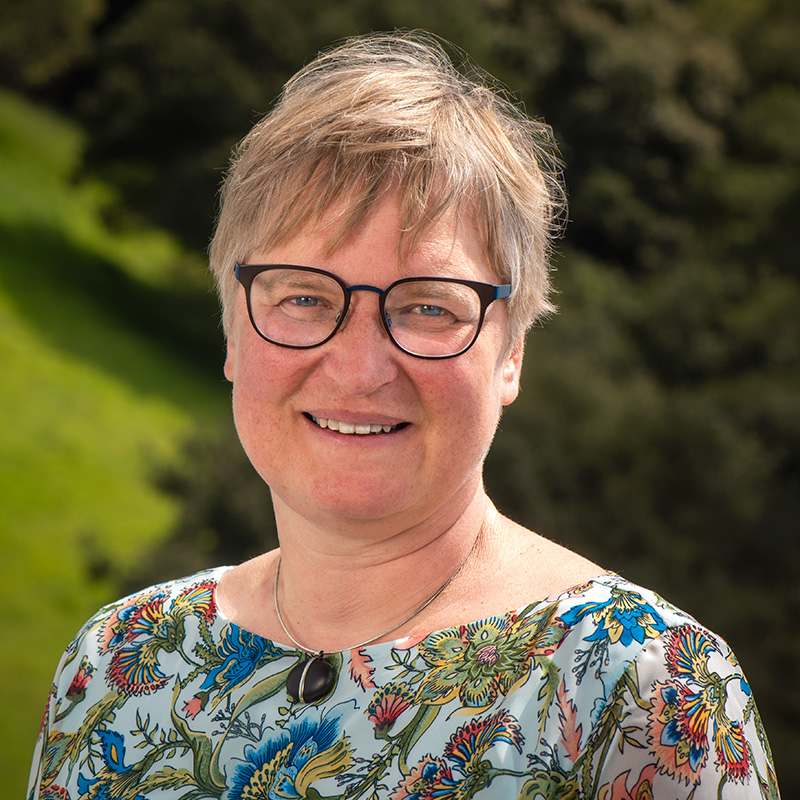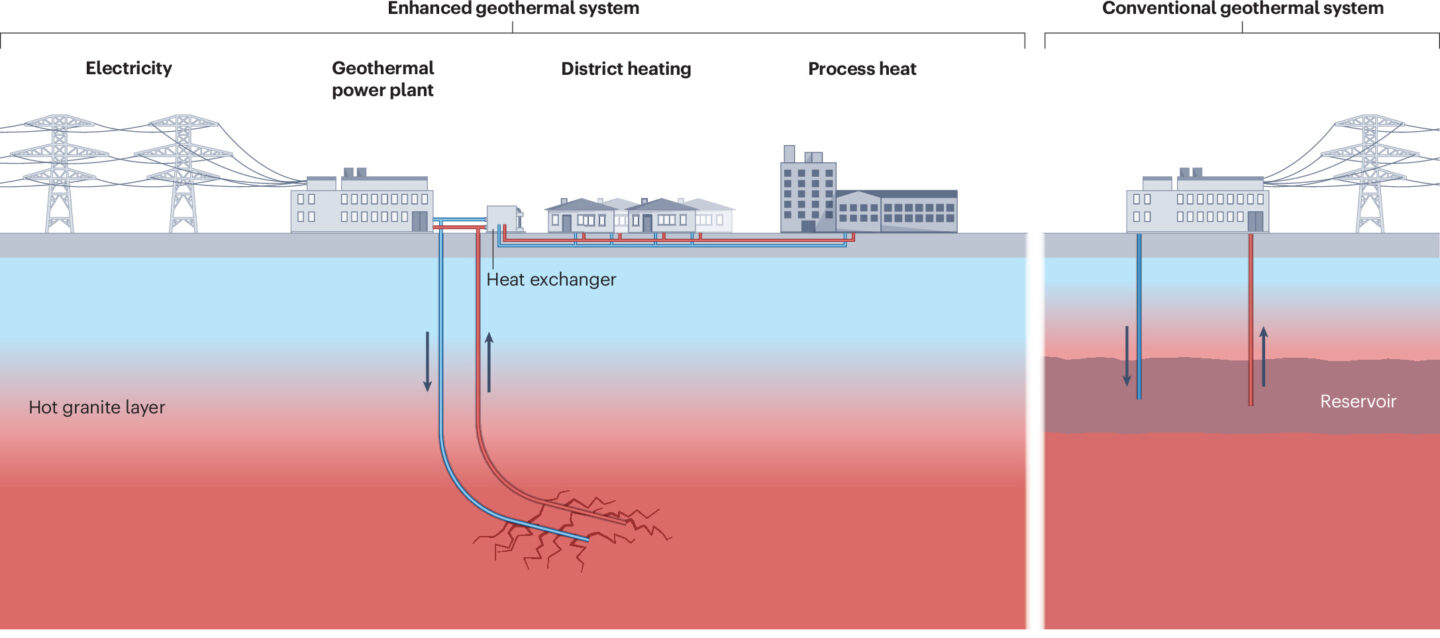Key Takeaways
- Geothermal power plants can operate at maximum capacity nearly 24/7/365 because the Earth's heat is constantly available.
- There is a substantial amount of heat in subsurface rock essentially everywhere, but not all rock is permeable enough to allow fluid to flow through. By enhancing rock permeability, enhanced geothermal systems (EGS) technologies help improve access to this near-ubiquitous domestic source of 24/7/365 energy.
- The U.S. has an advantage to expand EGS because our substantial infrastructure and technology for oil and gas production is the basis of what's needed to expand geothermal energy to more places around the country using EGS and other next-generation geothermal technologies.
With its capacity to provide 24/7 power, many are warming up to the prospect of geothermal energy. Fluids flowing through hot rocks deep underground absorb heat, which can be brought to Earth's surface to generate steam that powers turbines and produces electricity. Geothermal electricity-generating capacity has the potential to expand 20-fold in the United States by 2050. In the United States, where decades of experience in unconventional oil and gas production can be applied to new geothermal technologies, geothermal energy could power the equivalent of 65 million homes by 2050.

Eva Schill, Berkeley Lab Staff Scientist and Geothermal Systems Program Lead (Credit: Thor Swift/Berkeley Lab)
Scientists are currently working to advance humanmade reservoirs in Earth's deep subsurface to stimulate the activity that exists within natural geothermal systems. EGS technologies have the potential to be expanded throughout the country, in both the western United States where geothermal conditions are optimal, and the eastern U.S., where accessing temperatures hot enough for geothermal electricity production or thermal production requires deeper drilling.
Eva Schill, Berkeley Lab Staff Scientist and Geothermal Systems Program Lead, shared insights on how EGS technologies could provide affordable domestic geothermal energy and what Berkeley Lab scientists in the Energy Geosciences Division are doing to advance this field.
"The U.S. has a great advantage to expand EGS, because the technology can be based on the experience of the country's extensive unconventional oil and gas production that can be transferred to geothermal engineering."
– Eva Schill
Q. Why is geothermal in particular a promising domestic energy source for the United States?
Geothermal power plants can operate at maximum capacity nearly 24/7/365 because the Earth's heat is constantly available. To a certain extent, geothermal power plants can also respond to changing electricity demand by increasing or lowering energy generation, offering flexible production. We can even store large capacities of excess energy, for example in depleted underground reservoirs once used for oil and gas extraction, to save or use at a time of particularly high energy demand.
The U.S. has a great advantage to expand EGS, because the technology can be based on the experience of the country's extensive unconventional oil and gas production that can be transferred to geothermal engineering. In a recently published Nature Reviews Clean Technology paper, my colleagues and I discuss how adopting oilfield drilling strategies has made EGS drilling easier and less expensive.
Geothermal power plants also bring hot liquids rich in critical minerals to Earth's surface, offering access to elements such as lithium, a key ingredient in most batteries.

Q. Advancements are being made in EGS. What distinguishes these systems from conventional geothermal systems?
Conventional geothermal energy production relies on hot fluid that naturally flows underground through rocks; however, there is a substantial amount of heat in subsurface rock, essentially everywhere, but not all rock is permeable enough to allow fluid to flow through. By injecting water through wells, EGS either improves access to natural fluid or creates new underground heat exchangers by fracturing rock, which increases or enables fluid flow. At the surface, the heat is turned into electricity.
Q. Are there challenges or limitations to developing EGS? How can scientists address them?
Stimulating geothermal reservoirs, fracturing subsurface rocks to allow fluid flow, and injecting fluids underground cause movements or vibrations in the subsurface, most of which go undetected by humans. We study this "induced seismicity" in the field and lab by monitoring and simulating how underground movement changes in response to stimulation.
We have also adapted Berkeley Lab technologies for very hot temperatures (over 750 degrees Fahrenheit) and to access the deep subsurface (3 miles underground) through our own work at The Geysers Geothermal Field in California. Next we want to be able to closely study these harsh temperatures, pressures, and chemical conditions within the laboratory.
Q. How are you advancing EGS efforts within Berkeley Labs's Energy Geosciences Division?
Through lab experiments, simulations, and field testing, we study the temperature, mechanics, hydraulics, and chemistry of geothermal reservoirs to understand what geologic conditions, such as depth or rock type, are most favorable to EGS reservoirs as we look to create them artificially.
At Berkeley Lab's Geosciences Measurement Facility (GMF), we develop new technologies in-house, including fiber-optic sensing tools, GPS receivers, and more, which can help us accelerate EGS development and expansion.
We test different methods of creating, sustaining, and monitoring EGS through a collaboration focused on demonstrating the potential of EGS at a United States Department of Energy (DOE)-funded underground field-scale laboratory called Utah FORGE, and through EGS demonstration projects also supported by the DOE. One of these demonstration projects explores EGS in superhot conditions with temperatures above 700 degrees Fahrenheit, which can provide significantly more energy compared to geothermal reservoirs with lower temperatures.
For geotechnology development, there is often a wide gap between small-scale lab experiments and the real-world reservoir scale. That's why we use an intermediate scale: the underground laboratory to achieve realistic conditions. Berkeley Lab previously led a multi-national lab project called EGS Collab, to study and simulate rock fracturing in reservoir-type rock that allowed us to more closely understand and manipulate EGS development, monitoring, and stimulation methods.
Q. What makes Berkeley Lab especially capable of studying EGS?
Berkeley Lab has more than 40 years of experience in geothermal and EGS research. This expertise made it possible to develop a simulation platform that describes many thermal, hydraulic, mechanical and chemical reservoir processes. The suite of simulators, called TOUGH, is now widely used at universities, government organizations, and private industries, and can give clues on the locations of geothermal resources. This can help inform the logistics for reservoir engineering and operation, and monitor reservoir performance over decades of operation.
Berkeley Lab's DOE-supported Cyclotron Road has supported today's key players in geothermal and EGS development such as Fervo Energy and Zanskar. This has allowed Berkeley Lab to create a long-term, collaborative relationship to industry involved in emerging technologies.
Berkeley Lab is also home to many scientists that offer a unique range of expert perspectives on the many interdisciplinary fields involved in EGS, such as geologists, geochemists, geophysicists, seismic monitoring experts, and more. The commitment to team science makes this national laboratory a great place to study something as advanced as EGS which requires many great minds, perspectives, and capabilities.






